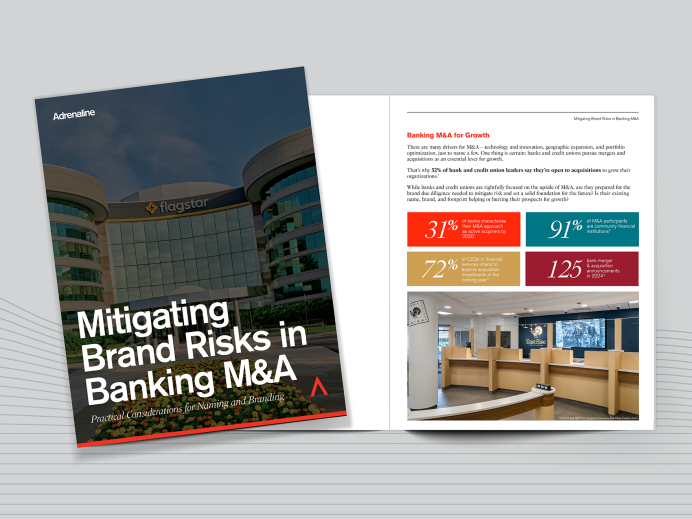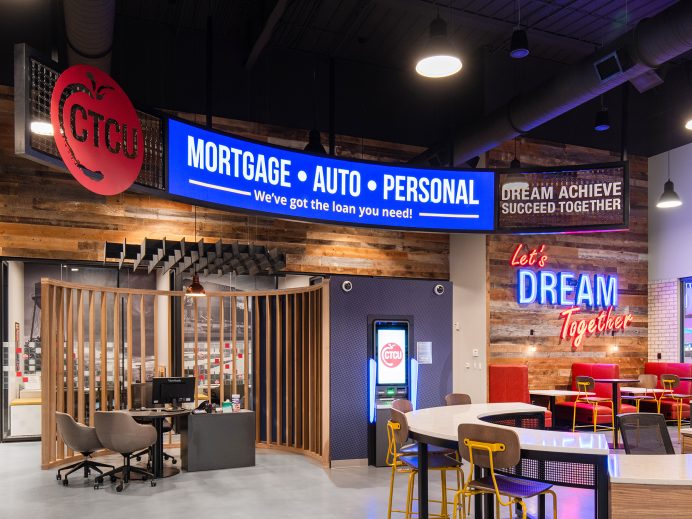It’s a story as old as the merger itself.
Two companies decide to join forces – either a merging of equals or one acquiring another – and a new multi-brand company is born. What to do about the brand name and structure is often one of the first challenges a newly merged brand will face, yet one of the last things decision-makers want to deal with after signing on the dotted line. The reality is that brand architecture is one of the defining features of success for merged entities, and following the path of least resistance often results in consumer confusion and staff strife.
In the banking sector in particular, mergers and acquisitions are big business. With M&A activity at a 20-year high, banks are often scaling for survival. In fact in this competitive environment of consumer choice, large proportions of middle-market banks will be looking to either acquire another bank or be acquired themselves. From a branding perspective, community banks will often be told these M&As are merely a formality with little change to individual brand identities. While kicking the can down the road may smooth ruffled feathers in the short-term, it will bring brand angst in the not-too-distant future.
Multiple Brand Organizations
In financial services, many banks haven’t done the brand legwork necessary to rename and relaunch a new brand following a merger or acquisition. As a result, countless banks choose to let that acquired entity retain their individual brand names. While these acquired banks are told they can keep their individuality, the reality is for most organizations that this type of brand architecture is not sustainable for the long term. That’s because the core reasons for merging – consolidating costs, capturing greater market share and expanding geographic footprint – are antithetical to multiple local brand identities.
Moreover, the more an organization grows through acquisition, the more confusing multiple names becomes. What many banks find out the hard way is that managing many brand names causes widespread internal inefficiencies and external uncertainty. As an example, one regional bank brand had purchased upwards of 30 different local banks before coordinating under one brand moniker. For the parent brand, that meant managing dozens of local operational structures and cultures just to do their everyday business. So, how did multiple brand deployment come to be?
White Labeling
What often started as a strategic market growth initiative has now morphed into this multiple brand environment that delays or denies the overall benefits of the merger or acquisition. In financial services, this begins with a credit union or bank pitching their services to a brand operating in a different consumer vertical. So, a large retailer or healthcare group would be sold on the idea of having their own financial services division. While this might seem on its face like customization, this kind of white labeling results in dilution of brand equity for both organizations.
With white labeling, the financial services operation is not an actual entity itself. It’s merely a credit union labeled with another name on top of it. The result of this white labeling is one brand that has no history of financial services now suddenly has its own credit union and behind the label, the institution with actual specialization in financial services doesn’t get to capitalize on their own brand recognition. A big box retailer or healthcare group shouldn’t really be doing financial services, so why are they white labeling? It’s not exactly a win-win for either organization.
Laddering Up
While defining your brand architecture is vital for future success, it’s important to note that your brand architecture is not your brand story. Oftentimes when a branding specialist is called in, it’s when the parent company realizes they need help managing the multiple brand environment, but that’s not what defines a brand story. Even with pressing brand architecture issues, it’s necessary to first establish a brand strategy. Once you layer on the brand structure onto brand strategy, that’s often when it becomes apparent that the current architecture doesn’t make sense for the brand going forward.
Even with most mid-size financial institutions facing merger or acquisition in their near future, most banks still have a general misunderstanding of the significance of branding to the success of their M&A endeavor. Following the path of least resistance, many merged entities continue to manage multiple local brands and forestall brand unification. From defining their brand promise to the market to branded customer communications, newly merged entities must take a step back to develop a cohesive brand strategy out of which their new compelling brand story will flow.
In our next article, we will define the brand architecture spectrum – from Branded House and Sub-Brands to Endorsed Brands and House of Brands. Along with defining each type of structure, we will highlight the pros and cons and give examples of brands operating under each type. We will also outline a series of questions to ask of following M&A that will help determine which structure will work best for different categories of multiple brand organizations. To speak with one of brand or M&A experts, contact us at info@adrenalinex.com.





